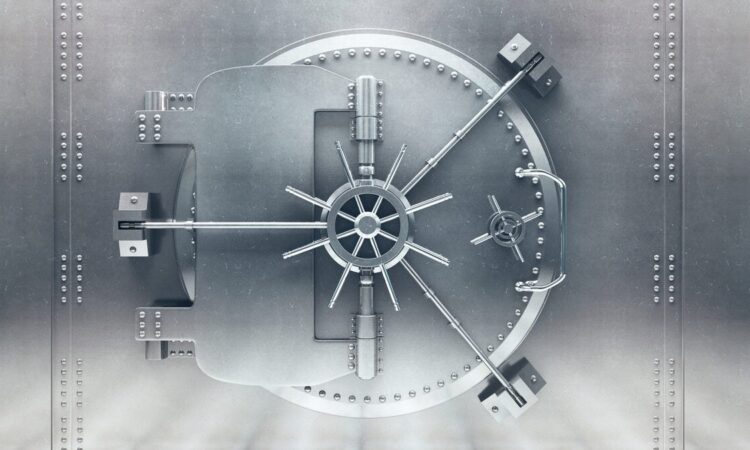
- Doesn’t require a minimum deposit to open an account.
- Comes with a $100 bonus for new account holders after completing qualifying activities.
- Doesn’t charge fees on overdrafts, money orders or cashier’s checks.
- Has more than 15,000 free ATMs and 4,700 branches across the U.S.
- Doesn’t earn interest.
- Charges a $4.95 monthly service fee.
- Doesn’t reimburse out-of-network ATM fees.
- Doesn’t offer check-writing privileges and can’t send or receive wire transfers.
About Chase Secure Banking℠
Chase Secure Banking is a checking account that offers perks like early direct deposit and zero overdraft fees. There’s no minimum deposit at opening, and you can even earn a $100 bonus for new account holders after completing qualifying activities.
Purchases and cash withdrawals can be made with a linked debit card, and you can add money to the account by:
- Depositing cash and checks at a branch or ATM.
- Depositing checks using the mobile app.
- Transferring money from another bank account.
- Setting up direct deposit. Chase says it will credit your transaction up to two business days early.
Like many other checking accounts, there are no fees to use in-network ATMs, send money through Zelle or set up online bill pay. There are also no overdraft fees, which isn’t as common with other checking accounts. Instead, the bank will decline or return a transaction if you don’t have enough money in the account to cover a charge.
However, this account isn’t perfect.
Starting in the third month, you’ll pay a $4.95 monthly service fee that can be waived with at least $250 in qualifying electronic deposits made into the account each statement period, and the account doesn’t offer wire transfer services.
It also doesn’t earn interest, unlike some high-yield checking accounts available and it doesn’t come with check-writing abilities, making it less convenient.
How Chase Secure Banking stacks up
Chase Secure Banking is a solid option if you want to take advantage of some of its special features, such as a welcome bonus and lack of overdraft fees. But its three major competitors offer checking accounts that allow you to write checks and waive the monthly fee. Here’s what to know:
Chase Secure Banking vs. Wells Fargo Everyday Checking
The Wells Fargo Everyday Checking account comes with a higher minimum opening deposit of $25 and a higher monthly service fee of $10 monthly fee which can be waived by maintaining a $500 minimum daily balance, having at least $500 in total qualifying electronic deposits, linking a Wells Fargo Campus ATM Card or Campus Debit Card to the account, receiving a qualifying monthly non-civilian military direct deposit with the Wells Fargo Worldwide Military Banking program or if the primary account owner is 17 to 24 years old. But unlike the Chase Secure Banking account, Wells Fargo allows you to waive the fee by keeping a monthly balance of at least $500, depositing $500 or more every month or meeting age requirements.
You can write checks and opt into overdraft protection, two services that aren’t available through Chase’s checking account.
Wells Fargo also offers three other checking accounts with minimum opening deposits of $25 and monthly fees ranging from $5 which can be waived if the primary account owner is 13 to 24 years old, if a Wells Fargo Campus ATM card or Campus Debit card is linked to the account or with a qualifying monthly non-civilian military direct deposit with the Wells Fargo Worldwide Military Banking program to $35 which can be waived each fee period with $250,000 or more in statement-ending qualifying linked consumer bank deposit account balances and investment account balances at Wells Fargo. Each account waives the fee if you complete qualifying activities.
Chase Secure Banking vs. Bank of America Advantage Plus Banking
The Bank of America Advantage Plus Banking® is a checking account that comes with a minimum opening deposit of $100 and a $12 monthly maintenance fee (waived if you have at least $250 in direct deposit payments each month, keep a minimum daily balance of $1,500 or more or if you’re a Preferred Rewards member). The account comes with a debit card, Zelle and check-writing abilities.
Bank of America also offers two other checking accounts, each with its own minimum opening deposit and monthly service fee.
Chase Secure Banking vs. Citi® Access Checking
The Citi® Access Checking account comes with no check-writing abilities and a $5 monthly service fee that’s waived for the first three months. After that period, you can waive the fee by having a Relationship Tier or receiving at least $250 each month in direct deposit payments. There are no overdraft fees, though Citibank may decline a transaction if it pushes your account balance past $0.
Citi’s other checking account, the Citi® Regular Checking, is nearly identical to the Access account but it has a $15 monthly waivable monthly fee, and offers unlimited check-writing abilities.
Frequently asked questions (FAQs)
That depends on your own financial goals and needs. Chase offers several different checking accounts with varying monthly fees, deposit and balance requirements, bonus offers and age requirements.
So there are many options to choose from, and you may be able to waive any recurring fees depending on the account you open.
They also have a large network of brick-and-mortar locations, so if you want to access in-person banking, Chase is a good choice.
There’s no minimum deposit required when you open a Chase Secure Banking account.
Yes, Chase Bank is a safe place to keep your money. Customers receive up to $250,000 in FDIC insurance per person, per institution and per account category.





